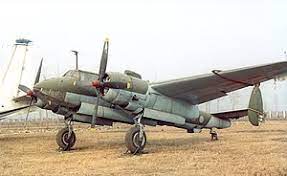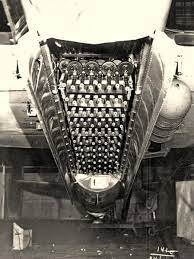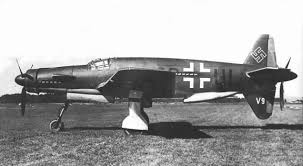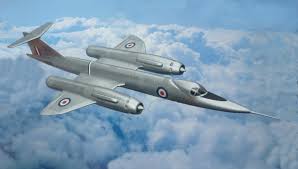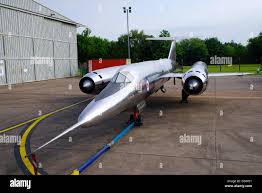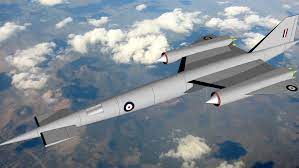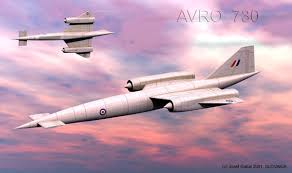majorshrapnel

|
|
-
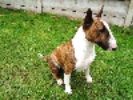
-
Rank:level-6
- Score:4963
- Posts:4963
-
From:United Kingdom

- Register:2008-12-20 12:28:28
|
Date Posted:2023-03-10 01:20:03Copy HTML
The BritishTSR2. This superb, highly advanced strike and reconnaissance aircraft is known in aviation circles as the plane that was shot down by its own government, as it never saw service or action. It was and still is, surrounded by mystery, conspiracy and conjecture. It was given a remarkable specification at birth, all of which were achieved and more. For a start it had to gain flight in under 600 yards and reach Mach 1.1 at ground level (200ft max) and Mach 2.2 at medium to high altitude, carry a nuclear bomb to Russia, dogfight with the best and remember we are dealing with an aircraft conceived in the 50's. It would have both front and side seeking radar and its Bristol Siddeley engines would later be fitted to the Concorde but only after the TSR2 had sorted its many faults out.The British aircraft industry had come out of WW2 as one of the very best, innovative designers and builders and with a nuclear Soviet Union to tend to the west needed such a high specification aircraft. The problem with the industry though was that we had no war to feed it and with an almost bankrupt nation it had too many companies chasing too few contracts, which led to a poison atmosphere in the industry and its various manufacturers, all stoked by political favouritism. The answer was the amalgamation of them to form BAC the British Aircraft Corporation and it was this company that would build the TSR2, all be it around the country, which became its first fault. Before it had been laid fully out it suffered political interference and design tampering, all of which began to raise the time and cost of it. Eventually it took to the air and it was spectacular and no exaggeration to say it was the finest aircraft on earth. Unfortunately it had just too many enemies, both at home and abroad, most notably the US with its rival F111. At home there was Louis Mountbatten a devoted navy man who wanted money for the Royal Navy. The RAF had 126 aircraft on order and the first overseas order was 30 for Australia but then we sent its biggest enemy to Australia in Mountbatten who then did his best to scupper the deal. In 1964 the Labour govt under Wilson came to power and the new PM visited the US to meet Johnson, a President who had been putting pressure on the Aussies to cancel their order and buy the F111 at a rock bottom price, ie under cost and between them they had the order cancelled with no objection from Wilson, who was after US loans and feared they would scupper his plans to borrow money from the IMF. Attacked from both sides the project was suddenly cancelled but not only was it cancelled but the political order went out that all built airframes, machines and tooling was to be destroyed and it was, including a wooden mock up, so that there would be no chance of another change of mind. The only change of mind was that we then bought 50 F111's from the Yanks. The govt wouldn't even allow the manufacturers to keep one for research, not one, it had to go, lock, stock and barrel and were even used as target practice. However, two in various states of finish were kept aside and they do survive and are on show at RAF Duxford museum.
|
majorshrapnel

|
Share to:




 #51
#51
|
-

-
Rank:level-6
- Score:4963
- Posts:4963
-
From:United Kingdom

- Register:2008-12-20 12:28:28
|
Re:Rare and unusual aircraft
Date Posted:2023-04-20 10:55:34Copy HTML
|
tommytalldog
![]()
|
Share to:




 #52
#52
|
-

-
Rank:level-6
- Score:8549
- Posts:8549
-
From:USA

- Register:2008-12-08 11:28:28
|
Re:Rare and unusual aircraft
Date Posted:2023-04-20 01:31:16Copy HTML
Not familiar with the TU. I know the Soviet Yak3 was a formidable fighter & the Bell Air Cobra which was produced in Buffalo was a major contribution for the Allies. The Americans did not care for it, but the Russians loved it. BTW, my mother worked for Bell Aircraft during & after WWII. |
majorshrapnel

|
Share to:




 #53
#53
|
-

-
Rank:level-6
- Score:4963
- Posts:4963
-
From:United Kingdom

- Register:2008-12-20 12:28:28
|
Re:Rare and unusual aircraft
Date Posted:2023-04-20 01:55:49Copy HTML
What did she do? I remember my mate's mother, she was a riveter for AVRO's during the war working on Lancasters and often told us she could boast a million rivets to her name. |
tommytalldog
![]()
|
Share to:




 #54
#54
|
-

-
Rank:level-6
- Score:8549
- Posts:8549
-
From:USA

- Register:2008-12-08 11:28:28
|
Re:Rare and unusual aircraft
Date Posted:2023-04-20 04:13:23Copy HTML
Worked security for the plant. |
majorshrapnel

|
Share to:




 #55
#55
|
-

-
Rank:level-6
- Score:4963
- Posts:4963
-
From:United Kingdom

- Register:2008-12-20 12:28:28
|
Re:Rare and unusual aircraft
Date Posted:2023-04-20 06:41:14Copy HTML
Worked security for the plant.
Liker mother like son eh? |
majorshrapnel

|
Share to:




 #56
#56
|
-

-
Rank:level-6
- Score:4963
- Posts:4963
-
From:United Kingdom

- Register:2008-12-20 12:28:28
|
Re:Rare and unusual aircraft
Date Posted:2023-04-25 09:44:23Copy HTML
The Japanese entered WW2 with probably the best fighter in the world at that time, the Mitsubishi Zero. Its range was astonishing and it played havoc with anything it came across and what made it so unusual and deadly was the fact that it was a carrier borne aircraft and could therefore find itself in any theatre of war throughout the Pacific. The US were prewarned about this special bit of kit by one of its military leaders who witnessed it first hand destroy the Chinese airforce with consummate ease, calling them hawks in a chicken coup but nobody in charge quite believed it. Following Pearl the Yanks were desperate to get their hands on one for inspection but it had proved impossible because of the Japanese mentality of its pilots, who would simply crash it straight into the sea or land, killing themselves, before allowing one to survive. It had an incredible 12 to 1 kill ratio because not only was it the best plane but its pilots were the best too, all with extensive training and experience, so the allies strategy had to be one of diving down on them from on high, because their aircraft were better than the Zero at this manoeuvre, shooting them up and immediately disappearing. However, many American military leaders considered this tactic to be somehow cowardly and so continued to tackle them head on and so the massive losses continued. The fact was though the Zero did have its faults and they knew the Yanks would, in time, produce aircraft that would have its measure so their gamble was that following Pearl the Yanks would sue for an honourable peace of some kind. Makes you wonder where on earth they get these ideas from. Then, during the Battle of Midway a Zero took a hit that severed an oil line and instead of flying straight into the sea, he thought he would land at the nearby island of Akutan, then destroy his plane but what he thought was a field was actually a swamp and when he hit it, he flipped over and unable to get out, drowned. So, there sat an almost complete Zero awaiting discovery. Fortunately, just a month later, an eagle eyed pilot flying a Catalina, spotted the plane and reported it. A small naval team landed with the intention of taking a look and were delighted to have found themselves an almost intact Zero, which was rapidly recovered and sent to a naval research base in San Diego. Did they pull it to bits? No, they repaired it so as to test it in flight, as well as on the ground and when they did they discovered some serious flaws which would be its downfall. It's construction was quite radical, using techniques that made it one and a half tons lighter that any US craft because it had no armour protection and an extremely thin body which is why a small hit could kill it. Just climbing into the plane could damage it, so it had button operated foot pins to climb up on. Also, its manoeuvrability was badly affected the faster it went and like the early Merlin engines, it had a float carburettor, which was affected in the dive or maximum speed but its main fault was Japan's lack of natural resources. It kicked off the war with just 600 planes, again with the ludicrous idea that the US would climb down but this plan gambled on the total destruction of its carrier fleet, which of course, never happened, so it was doomed from day one. The Zero finally ended up as nothing more than a Kamikaze flying bomb |
tommytalldog
![]()
|
Share to:




 #57
#57
|
-

-
Rank:level-6
- Score:8549
- Posts:8549
-
From:USA

- Register:2008-12-08 11:28:28
|
Re:Rare and unusual aircraft
Date Posted:2023-04-25 12:01:05Copy HTML
The Zero had maneuverability over any Allied plane at the beginning of the war. A Spitfire or Mustang were better armored & faster at near the end of the war. Then there were the numbers equation toward the end & the lack of trained pilots & it was only a matter of time for the Jap. |
pbandrew3rd

|
Share to:




 #58
#58
|
-

-
Rank:level-6
- Score:2579
- Posts:2579
-
From:Canada

- Register:2022-04-22 08:45:46
|
Re:Rare and unusual aircraft
Date Posted:2023-04-26 04:34:31Copy HTML
The Russian MIG-25 was highly rated during it's time. We know it as the FOXBAT. It could reach speeds of Mach 3.2 and could travel to any where in Russia in under 30 minutes.

|
majorshrapnel

|
Share to:




 #59
#59
|
-

-
Rank:level-6
- Score:4963
- Posts:4963
-
From:United Kingdom

- Register:2008-12-20 12:28:28
|
Re:Rare and unusual aircraft
Date Posted:2023-04-26 09:17:20Copy HTML
During the attack on Pearl the Zero of pilot Nishikaitchi was hit and realising that his plane could not get him back to his carrier he decided to land on Niihau island close by, which the Japs thought was uninhabited. His crash landing knocked him out but was seen by a local farmer, who took away his gun and documentation whilst he was unconscious but later took him to his home. Having no idea how to communicate with him he called on three Japanese residents to translate for him. They then found out about the attack on Pearl and the start of WW2 but didn't tell the farmer, they kept it a secret. However, the next day the islanders found out on the radio and the farmer told the Japanese residents he was going to hand over the documents in his possession to the US authorities and put a guard on the pilot. The Japanese residents tried everything to get the farmer to release the pilot and his information, including bribes but he refused them. These documents held the plan of attack on Pearl and codes. The farmer kept him under guard but the Japanese islanders helped him escape and mindful of his documents and aircraft being captured by the Yanks the Japanese tried to kill the farmer but he escaped. They then went to the crashed plane and set it alight to keep its secrets. On their return they took more hostages, threatening to murder them unless the farmer handed over the documents. However, the hostages managed to overpower the pilot and take his weapon. Having lost the documents and his hostages the pilot committed suicide and they were handed over to the US. The result of the island's Japanese inhabitant's behaviour convinced the US authorities that they could not trust the Japs living in the US and so this incident was used to intern them all. |
MarkUK

|
Share to:




 #60
#60
|
-
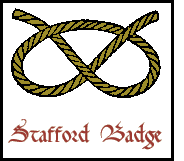
-
Rank:level-6
- Score:6049
- Posts:6049
-
From:United Kingdom

- Register:2009-11-12 09:24:59
|
Re:Rare and unusual aircraft
Date Posted:2023-04-26 10:20:48Copy HTML
Internment was a necessary action, as it was over here with Germans etc but of course the innocent got caught up too.
Not far from me is a huge cemetery containing the graves of around 5000 Germans from both wars. Among the Germanic names are English ones with the designation "internier", these would have been German sympathisers interned in camps and who died there. 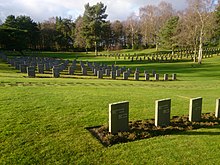
You're playing chess with Fate and Fate's winning.
Arnold Bennett
|
majorshrapnel

|
Share to:




 #61
#61
|
-

-
Rank:level-6
- Score:4963
- Posts:4963
-
From:United Kingdom

- Register:2008-12-20 12:28:28
|
Re:Rare and unusual aircraft
Date Posted:2023-05-05 09:35:37Copy HTML
So what was the fastest prop plane in WW2? Wrong.... it was the revolutionary Dornier Do 335. What makes this aircraft so unusual? It had two props, one at the front, as normal and one at the rear, plus it could be both a fighter and a bomber. It never got the chance to prove itself as its came out too late to participate but being the fastest doesn't make it the best and so it just joined that long list of weird and wonderful aircraft an advanced bunch of brilliant nutters produced out of desperation. Dornier himself was not a Nazi but a little word in his ear, or was it a gun? Made him and his company produce warplanes, mostly medium to heavy bombers but what the German's called a heavy bomber just wasn't in the same league as British and American models. It wasn't a new concept though, as he had already designed the P49 before the war, which was of the same configuration, a push-pull front and rear propellor system. What this clever little idea had over conventional side by side engines was the streamlining effect, as two engines on separate wings suffer far more drag and separate forces when the wind is coming in from differing angles and if one of your engines suffered a breakdown, for whatever reason, the other would get you home. It reached a top speed of 474 MPH, leaving the Mustang and Tempest in the dust at 440 MPH. Goering's hope for it was to catch and down that pesky De Havilland Mosquito he so hated yet admired. Other such novelty's included a system whereby the pilot could literally blow off his rear propellor with a charge if he had to bail out, so it didn't turn him into mincemeat. Although a large order was placed for the plane, the upcoming jet engined planes took precedence and only a handful were built. After the war a couple of survivors were sent to the US and one to Britain. The British one crashed during trials, killing the pilot and of the two American ones, one disappeared and the other ended up being restored, including using German engineers originally involved with the plane. It now sits in the national air and space museum. |
majorshrapnel

|
Share to:




 #62
#62
|
-

-
Rank:level-6
- Score:4963
- Posts:4963
-
From:United Kingdom

- Register:2008-12-20 12:28:28
|
Re:Rare and unusual aircraft
Date Posted:2023-05-05 09:38:02Copy HTML
|
pbandrew3rd

|
Share to:




 #63
#63
|
-

-
Rank:level-6
- Score:2579
- Posts:2579
-
From:Canada

- Register:2022-04-22 08:45:46
|
Re:Rare and unusual aircraft
Date Posted:2023-05-08 03:11:58Copy HTML
  To add insult to injury, Russia is on the hook for $330,000 in parking fees.© Steve Russell - Getty Images For over a year, a massive An-124 Ruslan cargo plane has been sitting on the tarmac of Toronto’s Pearson International Airport. The jet, with serial numbers RA-82078, had landed there on February 27, 2022 carrying a cargo of Covid-19 rapid tests—just four days after Russia launched its massive invasion of Ukraine. That same day, Canada’s transport minister closed Canadian airspace to all Russian-operated aircraft, keeping the An-124 grounded. Following an April 11, 2023 meeting between Ukrainian and Canadian prime ministers Denys Shmyhal and Justin Trudeau, Ottawa now plans to confiscate the plane and give it to Ukraine. This decision was made on the basis of a legal ruling by a Ukraine court that Russia’s Federal Air Transport Agency had illegally approved air-worthiness certification for all twelve of Volga Dnepr’s An-124s. Antonov Airlines, a branch of the Ukrainian state-owned company which designed the An-124, will undoubtedly receive the craft. And to add insult to injury, Russia is still on the hook for over $330,000 USD equivalent in parking fees for the over 400 days spent in impoundment. Since the early 1990s, these big haulers have been chartered by both civilian and military clients for rapid delivery of heavy, large-volume cargos including railway cars, industrial turbines, helicopters, tanks and, once, even a whale. Antonov Airlines retains a fleet of five An-124-100s which were re-homebased at Halle airport in Leipzig, Germany after the Russian invasion. Upon resuming operations last year, Antonov Airlines anticipated that the aircraft would fly up to 385 more missions, involving 1,270 landings. In August, the An-124s were all renamed after Ukrainian cities that experienced heavy fighting in the war, including Bucha, Irpin, Kharkiv, Mykolaiv, Ohktyrka, Kherson and Mariupol. Three more Volga-Dnepr An-124s (serial numbers RA-82043, 82045 and 82046) are also under impoundment, gathering dust at Leipzig. Germany’s plans for these impounded aircraft (one of which lacks engines) remain unclear. Besides Antonov and Volga-Dnepr, the craft type is operated by Russia’s military, and one is flown by UAE-based Maximus Airlines. Flight of the CondorUkraine used to be the sole proprietor of the world’s largest aircraft—the 314-ton An-225 Mriya ( “Dream”) transport plane, operated by its domestic Antonov Airlines from Hostomel Airport near Kyiv. This was effectively an enlarged An-124 with a different tail, specially built to carry the Soviet Buran space shuttle. When Putin launched his invasion of Ukraine on February 23, Russian paratroopers seized Hostomel in a helicopter landing operation, planning to use it as a launch pad to capture the Ukrainian capital. To their surprise, the Ukrainians counterattacked quickly and vigorously with air and ground forces, preventing additional troops from landing in the area and causing Putin’s attempted snatch-and-grab of Kyiv to collapse in shambles. When Ukrainian troops recaptured Hostomel for good on April 2, they found Mriya in its burn-out hangar, its front section smashed by shelling. The loss of the likely irrecoverable Mriya left it’s smaller—but still ginormous—sister, the Antonov An-124 Ruslan, with the title of largest in the world. The An-124 began development in the 1970s as “Project 400”, a Soviet counterpart to the huge American C-5 Galaxy heavy-haul cargo jet. The An-124 closely resembled the C-5 Galaxy, including its folding nose cone used to facilitate loading and offloading. However, the Soviets brought technical flourishes to the concept, including a computerized fly-by-wire flight controls system and both ground-scanning navigation and weather radars. The primarily aluminum aircraft also incorporated 5% lightweight composite materials, as well as ultra-hard (and ultra-expensive) titanium flooring for the cargo deck. A total of 24 massive wheels on 10 gear-fairings supported the aircraft, each with built in auxiliary power units. Those wheels can be deflated to crouch the jet down for ease of unloading. Propulsion was provided by four Lotarev D-18T turbofan engines—the first fuel-efficient high-bypass engines developed by the Soviet Union—which could also reverse thrust to assist with landing. Ultimately, compared to the C-5, the An-124 boasted 20% more internal volume and 17% higher maximum cargo weight. The massive aircraft could carry up to three main battle tanks, five BMP infantry fighting vehicles, or an entire mini submarine. Its cargo bay even included a 30-ton capacity crane to facilitate loading and unloading. Unlike the C-5, however, the Ruslan lacked inflight-refueling capability, and its main hold wasn’t fully pressurized to support passengers or paratroopers—though it does have an upper passenger deck with seating for 88 personnel. Despite making its first flight in December of 1982, followed by an unveiling at the Paris Airshow in 1985, the An-124 wasn’t fully operationally reliable until 1991. Altogether, 53 An-124s were built (including the prototype), with parts for two more left unassembled. Antonov built eighteen of these in Ukraine, while the remainder were built by the Ulyanovsk factory in Russia. Of these aircraft, 22 were built or converted into the civilian An-124-100 aircraft, stripped of military systems and fit with improved D-18T series 3 engines with much longer service lives (18,000 hours). Four An-124s were lost in deadly accidents that claimed 97 lives between them, with a fifth An-124 heavily damaged in a belly landing after losing engine power. Even before the dissolution of the Soviet Union, however, Antonov began arranging international cargo flights in partnership with British company Air Foyle, which included delivering U.S. Patriot missiles during the Persian Gulf War. This began a trend of the An-124 fleet seemingly ending up providing more transportation services to NATO-member militaries than Russia’s armed forces, particularly during ‘War on Terror’-era operations in the Middle East and Afghanistan. These services included delivering Canadian Leopard 2 tanks for combat in that latter period. The partnership with Air Foyle ended in 2005, and Antonov instead leased twelve An-124s to a consortium with Russia called Volga-Dnepr, while also operating its own Antonov Airlines. The -100s were gradually modernized, with new avionics allowing downsizing of flight crew from six to four in the -100M submodel. Then, in 2005, Antonov also refit a unique An-124-100-150M aircraft with a D-18T Series 4 engine, boasting 10% increased thrust, in turn and increasing max carrying capacity and range to 150 tons and 9,631 miles, respectively. An-124 cargo missions included transporting the 4th-century Axium obelisk—weighing 160 tons—from Rome back to Ethiopia, the dismantled components of a U.S. Navy EP-3E spy plane that forced landed in China’s Hainan island, a Falcon Heavy rocket, a massive Putzmeister concrete pump airlifted from Germany to Japan to help cool of the melt-down Fukushima reactor, and huge quantities of masks and tests during the peak COVID-19 era. The An-124 also established world records for the heaviest-ever lift—carrying a 187.6-ton German generator to Armenia—and the longest unrefueled flight ever, traversing over 12,520 miles in 25 hours and 30 minutes.
|
majorshrapnel

|
Share to:




 #64
#64
|
-

-
Rank:level-6
- Score:4963
- Posts:4963
-
From:United Kingdom

- Register:2008-12-20 12:28:28
|
Re:Rare and unusual aircraft
Date Posted:2023-05-11 09:14:58Copy HTML
Following WW2 The British government put out a specification for a supersonic bomber that would be the second fastest in the world at Mach 2.75. just behind the American x15. The contract was given to the Bristol aircraft company who would build a radical, chromium mix, stainless steel aircraft that could withstand the 500 degree temperature generated at that speed. The result was a beautifully sleek aircraft which attracted the nickname, the flying pencil, or Bristol 188 to the government. It's development and construction suffered many setbacks, as radical aircraft often do and it would be seven years before it took to the sky for testing, where further problems were exposed, such as massive fuel consumption, which forced them to change engines. As time went by it began to fall out of favour, due to its staggering costs and inherent problems, which gave its test pilot the title of 'the most likely man to eject in the coming year'. Having not lived up to expectations the 188 was finally cancelled in 1964 but despite its disappointment it proved invaluable in research and development of such aircraft. Its replacement was to be the incredible AVRO 730 which also fell to government cutbacks and it was considered that missile technology replace them. Another consequence of the costly failure was the ending of the many famous, independent aircraft companies which were all merged to form the British Aircraft Corporation. As is common with Britain, for some unknown reason, the 188's were just made into scrap or used as target practice but fortunately one has survived as a museum piece. |
majorshrapnel

|
Share to:




 #65
#65
|
-

-
Rank:level-6
- Score:4963
- Posts:4963
-
From:United Kingdom

- Register:2008-12-20 12:28:28
|
Re:Rare and unusual aircraft
Date Posted:2023-05-11 09:17:27Copy HTML
|
tommytalldog
![]()
|
Share to:




 #66
#66
|
-

-
Rank:level-6
- Score:8549
- Posts:8549
-
From:USA

- Register:2008-12-08 11:28:28
|
Re:Rare and unusual aircraft
Date Posted:2023-05-11 11:27:47Copy HTML
The SR-71 Blackbird looks similar in design. |
majorshrapnel

|
Share to:




 #67
#67
|
-

-
Rank:level-6
- Score:4963
- Posts:4963
-
From:United Kingdom

- Register:2008-12-20 12:28:28
|
Re:Rare and unusual aircraft
Date Posted:2023-05-15 11:11:47Copy HTML
There's nothing rare about the Vulcan bomber, surely one of the most awesome, versatile and deadly machines ever to leave these shores and nuke the US. Yep, the AVRO Vulcan nuked the US not once but twice and it was kept quiet for years. This masterpiece, mostly designed by the man who was responsible for the Lancaster bomber, Roy Chadwick, displayed a quantum leap in aviation evolution, following on just seven years after the Lanc and WW2 and frankly they look 27 years apart. It is, by the way, the noisiest aircraft I have ever heard and that includes the Concorde. In 1960 the USA decided to run the biggest test of its air defences in its history, code named Operation Skyfield and during that time all civil aircraft aircraft were grounded, which amounted to around a thousand at the time. The US airforce was to launch its B47 and B52's in a simulated attack on the US and in response 360 fighters were tasked with stopping them. Britain was cordially invited to take part and supplied seven Vulcans for the job. During the exercise one Vulcan was successfully intercepted but the other six got through. So how? Well it was all to do with their sophisticated counter radar measures, along with its astonishing manoeuvrability. These bombers were not armed as they could outmanoeuvre the Russian fighters of the day. The US strategic command, being red faced at the result, hid all knowledge of the Vulcan's success and the following year invited this Limey fluke to try again and see how far they got this time. 3000 civilian flights were cancelled this time as they were determined to get it right this time. 125 US and British bombers were tasked with breeching US airspace against 1800 fighters and 250 missile sites. This time eight Vulcans took part, four of which would attack from the south and four from the north. Of those who attacked from the north, only one was intercepted. From the south one Vulcan nuked New York without detection. Many B52's did the same but were nowhere near the 90% success rate of the Vulcan. The government denied the growing rumours of the RAF's success and kept it a state secret, only officially admitting it in 1997 after the Vulcan had left service with the RAF. |
tommytalldog
![]()
|
Share to:




 #68
#68
|
-

-
Rank:level-6
- Score:8549
- Posts:8549
-
From:USA

- Register:2008-12-08 11:28:28
|
Re:Rare and unusual aircraft
Date Posted:2023-05-15 01:10:17Copy HTML
The Vulcan wasn't that good, Major. One of them crashed in Thunderball. Thank God for James Bond. The Vulcan was cool looking..............almost sinister. |
tommytalldog
![]()
|
Share to:




 #69
#69
|
-

-
Rank:level-6
- Score:8549
- Posts:8549
-
From:USA

- Register:2008-12-08 11:28:28
|
Re:Rare and unusual aircraft
Date Posted:2023-05-17 11:17:07Copy HTML
The firs U.S. prototype jet aircraft had its maiden flight with a pilot in a gorilla suit. The reason was if other pilots saw an aircraft with no propeller being flown by a gorilla, nobody would believe it. On that topic, Big Foot saw me in the woods the other day, but nobody believed him. So much for Top Secret eh? |
majorshrapnel

|
Share to:




 #70
#70
|
-

-
Rank:level-6
- Score:4963
- Posts:4963
-
From:United Kingdom

- Register:2008-12-20 12:28:28
|
Re:Rare and unusual aircraft
Date Posted:2023-05-17 01:09:00Copy HTML
|
tommytalldog
![]()
|
Share to:




 #71
#71
|
-

-
Rank:level-6
- Score:8549
- Posts:8549
-
From:USA

- Register:2008-12-08 11:28:28
|
Re:Rare and unusual aircraft
Date Posted:2023-05-17 03:47:15Copy HTML
Have I shown this one before?
Now that is a very British reply Major. BTW, the insignia on the tail of the Tomcat is that of the famed "Jolly Rogers" squadron.
|
majorshrapnel

|
Share to:




 #72
#72
|
-

-
Rank:level-6
- Score:4963
- Posts:4963
-
From:United Kingdom

- Register:2008-12-20 12:28:28
|
Re:Rare and unusual aircraft
Date Posted:2023-05-23 09:50:29Copy HTML
Fairey Engineering was founded in 1915 by Charles Richard Fairey (later Sir Richard Fairey) and Belgian engineer Ernest Oscar. Although almost unknown now it was once one of the most innovative aircraft manufacturers in the world and built over 40 different models during its existence including helicopters. It's most famous offspring is the Swordfish, or Stringbag as it was known, an unlikely hero if ever there was one, famous for the demise of the Bismark, the Italian navy in Taranto and the French fleet at Mers el Kabir, to mention a few. Probably no single plane in history is responsible for so much tonnage as the Swordfish. However, that's not the plane I'm going to introduce, it's the Fairey Delta 2 and super advanced aircraft which became yet another of those lost opportunities, those 'what if' aircraft. Following the war Fairey proposed to build a delta winged supersonic aircraft. This was the first for Britain but not the world as the first flight of a delta wing craft was by the Germans in 1931, a prop plane and the Yanks flew the first jet powered craft in 1948, the much feared, by pilots, Corvair xf92. The Fairey Delta was the first aircraft to incorporate the droop cockpit to aid the pilot in landing, a feature that would be incorporated in the Concorde some years later. Fairey's aim was a single engined supersonic fighter and this plane achieved that reaching 1192 MPH after just a few flights, then immediately went up to 1700 MPH, breaking the world speed record by over 300mph. The MK2 model experimented with what is known as an Ogival wing, which instead of a straight triangle wing, the wings outer edge is rounded, again a feature that would be incorporated into the Vulcan bomber and Concorde. This plane would set a record for the longest lived experimental aircraft in British history. Compared to what the RAF was flying at the time ie the Gloucester Meteor and De Havilland Vampire, this aircraft looked space age and completely out performed anything we had at the time and when the Korean war began we found ourselves out performed by the MIGS. Fairey also proposed a Delta 3, with twin engines and would have been a world beater and there was talk of building it as a NATO plane, using other European countries but a political decision, ie American threat, meant that they chose the F111 instead and why? Because of the huge bribes paid to European politicians by the Yanks a fact that came to light as the Lockheed bribes scandal. Then, as they are apt to do, the British parliament stuck another dagger in its heart by banning all supersonic flights over British airspace and left it with unsuitable places to test but whereas we banned them, others were quite happy to allow them, namely the French who just happened to want their own delta winged aircraft and we didn't stop Fairey, so following the Delta's time there the French were to produce their own single engined delta winged craft, the Mirage, an aircraft that would make the reputation of the French aircraft industry and go on to be a spectacular export success story. The owner of the Mirage company Marcel Desault said of us, if it were not for the clumsy way you tackle things in Britain you could have made the Mirage yourselves. |
majorshrapnel

|
Share to:




 #73
#73
|
-

-
Rank:level-6
- Score:4963
- Posts:4963
-
From:United Kingdom

- Register:2008-12-20 12:28:28
|
Re:Rare and unusual aircraft
Date Posted:2023-05-23 09:56:29Copy HTML
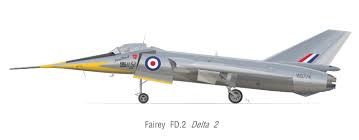 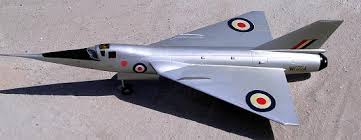
The Fairey Delta 2
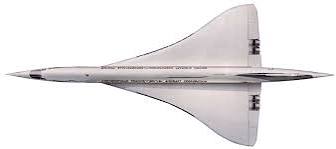
This is the ogival wing shape, the variant on a straight edged triangle
|
tommytalldog
![]()
|
Share to:




 #74
#74
|
-

-
Rank:level-6
- Score:8549
- Posts:8549
-
From:USA

- Register:2008-12-08 11:28:28
|
Re:Rare and unusual aircraft
Date Posted:2023-05-23 11:42:42Copy HTML
Now that is a "nasty" looking aircraft but all that is lost with a name like "Fairey." The F-111 was made by General Dynamics & was an "all purpose" airplane which of course is never good. The jack of all trades thingy. Like most American kit, it was too complicated. It faired well in the Iraqi War, mostly because of poorly trained & maintained enemy. The Lockheed bribery scandals involved the bribing of politicians to get business. Over-charging our own federal government & other sinister business practices that are typical American. |
majorshrapnel

|
Share to:




 #75
#75
|
-

-
Rank:level-6
- Score:4963
- Posts:4963
-
From:United Kingdom

- Register:2008-12-20 12:28:28
|
Re:Rare and unusual aircraft
Date Posted:2023-05-23 05:49:24Copy HTML
Here's an interesting fact, did you know that a pointed nose is of no real streamlining use under 200MPH? |
Copyright © 2000- Aimoo Free Forum All rights reserved.















